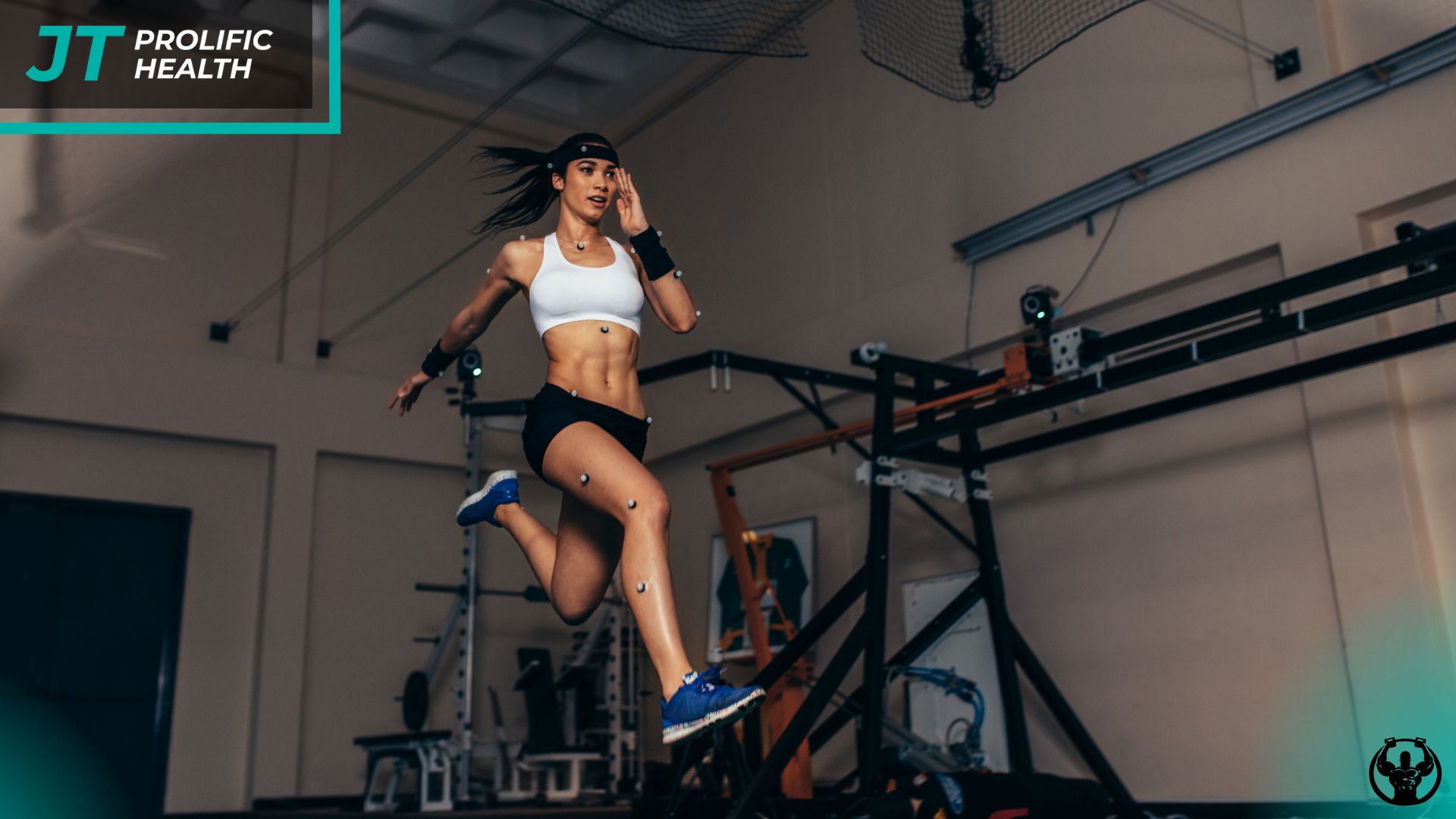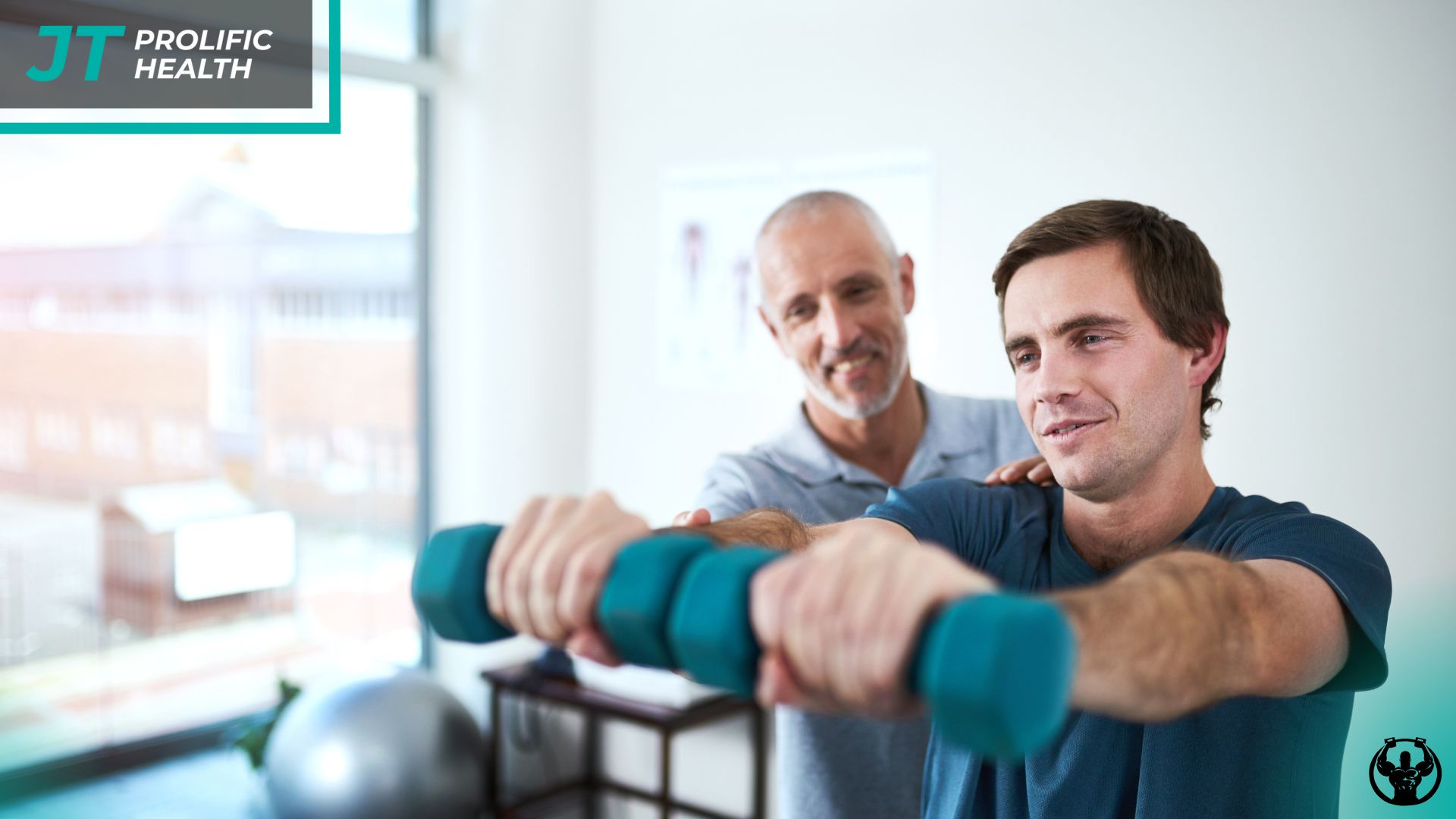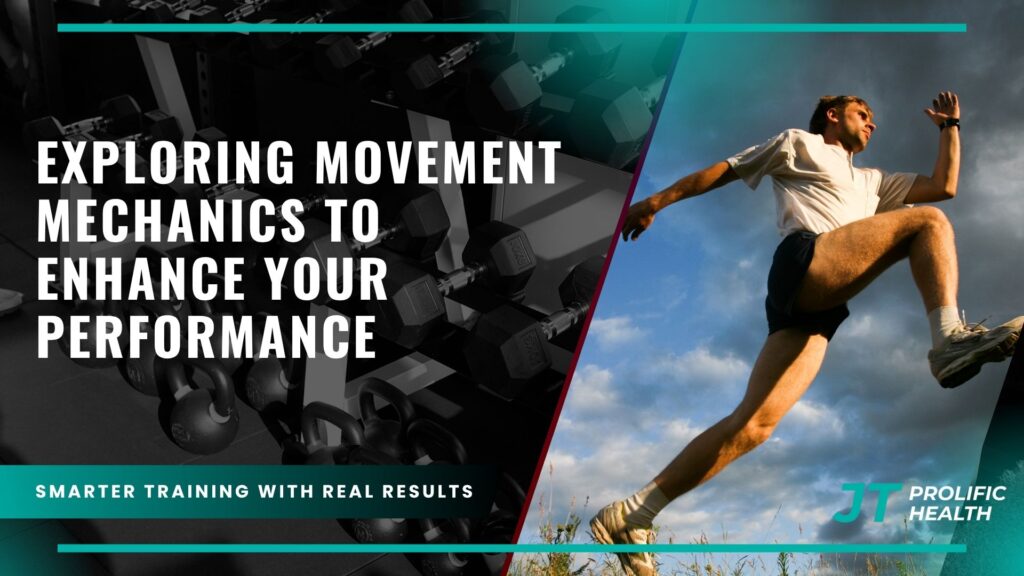Movement mechanics form the foundation of every athletic pursuit, from the casual weekend warrior’s morning jog to the elite athlete’s championship-winning performance. Understanding how your body moves through space and time isn’t just academic knowledge—it’s the key to unlocking your physical potential while staying injury-free throughout your fitness journey.
The human body operates as an intricate machine, with each joint, muscle, and connective tissue playing a crucial role in creating efficient movement patterns. When these components work in harmony, the result is fluid, powerful motion that maximizes performance while minimizing energy expenditure and injury risk. However, when movement mechanics break down, compensation patterns emerge, leading to decreased performance and increased vulnerability to injury.
Modern training approaches increasingly emphasize the importance of movement quality over quantity. This shift represents a fundamental change in how fitness professionals and athletes approach performance enhancement. Rather than simply focusing on lifting heavier weights or running faster times, the emphasis has moved toward understanding and optimizing the underlying movement patterns that make these achievements possible.
The biomechanics of movement encompasses everything from how your foot strikes the ground during running to the precise coordination required for a perfect golf swing. These mechanical principles govern not only athletic performance but also everyday activities like climbing stairs, carrying groceries, or playing with children. By developing a deeper understanding of movement mechanics, individuals can transform their relationship with physical activity and unlock levels of performance they never thought possible.
Whether you’re an experienced athlete looking to break through performance plateaus or someone just beginning their fitness journey, mastering movement mechanics provides the roadmap to success. This comprehensive exploration will guide you through the essential concepts, practical applications, and proven strategies that can revolutionize your approach to physical performance and help you move with greater efficiency, power, and confidence.
Key Takeaways
For additional context, see this comprehensive guide.
- Movement Quality Trumps Quantity: Focusing on proper movement mechanics yields better long-term results than simply increasing training volume or intensity. Quality movement patterns form the foundation for all athletic performance and injury prevention strategies.
- Kinetic Chain Integration: The body functions as an interconnected system where movement at one joint affects the entire kinetic chain. Understanding these relationships allows for more effective training and rehabilitation approaches.
- Force Production and Transfer: Efficient movement mechanics optimize how force is generated, transferred, and applied throughout the body. This principle applies whether you’re sprinting, lifting weights, or performing complex athletic movements.
- Individual Movement Signatures: Every person has unique anatomical and physiological characteristics that influence their optimal movement patterns. Recognizing and working with these individual differences is crucial for maximizing performance potential.
- Progressive Movement Development: Improving movement mechanics follows a systematic progression from basic mobility and stability to complex, sport-specific patterns. Skipping foundational steps often leads to compensation and eventual breakdown.
- Real-Time Feedback Integration: Developing kinesthetic awareness and the ability to self-correct movement patterns in real-time is essential for long-term improvement and injury prevention.
- Environmental Adaptation: Effective movement mechanics must account for changing environmental conditions, equipment variations, and fatigue states that occur during actual performance situations.
- Recovery and Regeneration: Understanding how movement mechanics influence recovery processes helps optimize training adaptations and maintain consistent performance over time.
Understanding the Fundamentals of Movement Mechanics


Movement mechanics represent the scientific study of how forces interact with the human body to produce motion. This field combines principles from physics, anatomy, and physiology to create a comprehensive understanding of human movement. At its core, movement mechanics examines how muscles generate force, how joints facilitate motion, and how the nervous system coordinates these complex interactions.
The foundation of movement mechanics rests on several key principles. First, the concept of kinetic chains describes how movement at one joint influences adjacent joints throughout the body. When you throw a baseball, for example, the power doesn’t originate solely from your arm—it begins with your feet pushing against the ground, travels through your legs and core, and finally transfers through your shoulder and arm to the ball.
Ground reaction forces play a crucial role in most athletic movements. Every time your foot contacts the ground, Newton’s third law ensures that the ground pushes back with equal force. How efficiently you can harness and redirect these forces determines much of your athletic potential. Elite sprinters, for instance, excel not just because they can move their legs quickly, but because they can apply force to the ground in ways that propel them forward most effectively.
The timing and sequencing of muscle activation patterns distinguish efficient movement from compensatory patterns. Optimal movement requires precise coordination between different muscle groups, with some providing stability while others generate motion. This coordination develops through practice and proper training, but it can also be disrupted by injuries, fatigue, or poor movement habits.
Understanding these fundamentals provides the framework for analyzing and improving any movement pattern. Whether you’re working to perfect your squat technique or enhance your tennis serve, the same mechanical principles apply. By grasping these concepts, you can begin to see movement not as a collection of separate actions, but as an integrated system working toward a common goal.
The Science Behind Biomechanics of Movement


The biomechanics of movement delves deeper into the mechanical aspects of human motion, examining how biological structures create and control movement patterns. This scientific discipline provides the theoretical foundation for understanding why certain movement patterns are more efficient than others and how individual anatomical differences influence optimal technique.
Lever systems within the human body determine how muscles generate and apply force. The body contains examples of all three classes of levers, each with different mechanical advantages. Understanding these systems helps explain why certain exercises feel easier or harder for different individuals and how technique modifications can optimize force production. For instance, the length of your limbs relative to your torso significantly influences your optimal squat and deadlift techniques.
Joint mechanics play a crucial role in movement efficiency and injury prevention. Each joint in the body has specific ranges of motion and stability requirements. When joints move outside their optimal ranges or lack adequate stability, compensation patterns develop that can reduce performance and increase injury risk. The hip joint, for example, requires both mobility for activities like squatting and stability for activities like single-leg standing.
Muscle architecture influences how different muscles contribute to movement patterns. Pennate muscles excel at generating high forces, while parallel-fibered muscles are better suited for producing rapid movements through large ranges of motion. Understanding these architectural differences helps explain why certain training methods are more effective for developing specific qualities like strength versus speed.
The nervous system’s role in movement control cannot be overstated. Motor unit recruitment patterns, intermuscular coordination, and reflexive responses all contribute to movement quality. The nervous system adapts more quickly than structural tissues, which is why beginners often see rapid improvements in strength and coordination before significant muscle growth occurs. For those wondering about professional guidance during early training phases, understanding these neurological adaptations can help inform timing decisions.
Energy systems integration affects movement mechanics, particularly during prolonged activities. As fatigue accumulates, movement patterns often deteriorate as the body seeks to maintain performance through compensation strategies. Recognizing these fatigue-related changes allows for better training program design and injury prevention strategies.
Analyzing Movement Patterns for Performance Enhancement


Effective movement analysis requires a systematic approach that examines both the global movement pattern and its individual components. This process involves observing movement from multiple angles, identifying deviation from optimal patterns, and understanding the underlying causes of these deviations. Professional movement analysis has become increasingly sophisticated, but many fundamental principles can be applied by anyone seeking to improve their movement quality.
The movement screen represents the foundation of systematic movement analysis. This process typically begins with observing fundamental movement patterns like squatting, lunging, and reaching overhead. These basic patterns reveal mobility limitations, stability deficits, and coordination issues that affect more complex athletic movements. A person who cannot perform a proper overhead squat, for example, will likely struggle with Olympic lifting movements or overhead athletic activities.
Video analysis has revolutionized movement assessment by allowing frame-by-frame examination of movement patterns. High-speed cameras can capture details invisible to the naked eye, revealing subtle timing issues or technique flaws that significantly impact performance. Even smartphone cameras can provide valuable insights when used systematically to record movements from consistent angles and distances.
Identifying compensation patterns requires understanding how the body adapts to limitations or dysfunctions. Common compensations include excessive forward lean during squats (often indicating ankle mobility restrictions), knee valgus during landing (suggesting hip weakness or poor motor control), and early arm fatigue during overhead activities (typically related to shoulder blade stability issues).
Force plate technology and wearable sensors provide objective data about movement quality that complements visual observation. These tools can measure ground reaction forces, joint angles, and acceleration patterns with precision impossible through visual analysis alone. While not necessary for basic movement improvement, this technology provides valuable insights for serious athletes seeking marginal gains.
The integration of movement analysis with performance goals ensures that assessment leads to actionable improvement strategies. Different sports and activities place varying demands on movement quality, so analysis must be context-specific. A powerlifter’s movement needs differ significantly from those of a tennis player, even though both can benefit from improved fundamental movement patterns. Understanding these differences helps prioritize which movement qualities to address first and how to structure training progressions effectively.
Corrective Strategies for Movement Dysfunction
When movement analysis reveals dysfunctions or limitations, targeted corrective strategies can address these issues systematically. The most effective approach follows a logical progression from addressing mobility restrictions to developing stability and finally integrating improved movement patterns into functional activities. This systematic approach ensures that corrections are sustainable and transfer to real-world performance situations.
Mobility interventions typically form the foundation of corrective strategies. Restricted range of motion at key joints creates compensation patterns that affect entire movement chains. Static stretching, dynamic warm-ups, and soft tissue techniques all play roles in restoring optimal joint mobility. However, the timing and application of these interventions matter significantly. Static stretching before explosive activities, for instance, can temporarily reduce power output, while the same stretching performed post-workout aids recovery.
Stability training addresses the body’s ability to maintain proper joint alignment during movement. Core stability extends beyond simple abdominal strength to encompass the coordinated action of deep stabilizing muscles throughout the body. Exercises that challenge stability in multiple planes of motion, such as single-leg stands with perturbations or loaded carries, develop the unconscious stability responses essential for optimal movement patterns.
Motor control training focuses on reestablishing proper movement patterns through conscious practice and repetition. This phase often requires slowing down movements and performing them with perfect technique rather than focusing on speed or load. The nervous system needs time to establish new movement patterns, and rushing this process often results in reverting to old, dysfunctional patterns under stress.
Progressive loading allows the body to adapt to increasing demands while maintaining proper movement quality. This progression might begin with bodyweight movements, advance to light external loads, and eventually progress to sport-specific intensities. The key is maintaining movement quality throughout this progression, as compensation patterns learned under load are often more persistent than those developed during unloaded movement.
Integration strategies ensure that improved movement patterns transfer to actual performance situations. This might involve practicing corrected movement patterns under fatigue, in challenging environments, or while performing sport-specific skills. For individuals considering optimal training frequency for movement correction, consistency in practicing these integration strategies often matters more than training volume.
Technology and Tools for Movement Assessment
Modern technology has dramatically expanded the possibilities for movement assessment and analysis. From sophisticated laboratory equipment to smartphone apps, various tools can provide insights into movement quality that were previously available only to elite athletes and researchers. Understanding the capabilities and limitations of different assessment technologies helps determine which tools are most appropriate for specific goals and budgets.
Three-dimensional motion capture represents the gold standard for movement analysis in research and elite sport settings. These systems use multiple cameras and reflective markers to track body segment positions with millimeter accuracy. While primarily used in laboratory settings, portable motion capture systems are becoming more accessible for field-based assessments. The detailed data these systems provide can reveal subtle movement asymmetries and timing issues invisible to traditional observation methods.
Wearable sensors and smartphone applications have democratized movement analysis by making basic assessment tools available to anyone. Accelerometers, gyroscopes, and magnetometers in modern devices can track movement patterns, detect asymmetries, and provide feedback about movement quality. While less precise than laboratory equipment, these tools offer the advantage of continuous monitoring during actual training and competition.
Force platforms measure ground reaction forces during various movements, providing objective data about how effectively individuals generate and apply force. This information is particularly valuable for analyzing jumping, landing, and change-of-direction movements. Portable force plates have made this technology more accessible, though even simple jump tests can provide insights into force production capabilities and movement efficiency.
Electromyography (EMG) measures muscle activation patterns during movement, revealing how different muscles contribute to specific movement patterns. This technology can identify muscles that are overactive, underactive, or poorly timed in their activation. While traditionally requiring specialized equipment, wireless EMG systems are becoming more practical for routine assessment and training applications.
Video analysis software enhances traditional visual assessment by allowing detailed examination of movement patterns. These programs can measure joint angles, track movement velocities, and compare movements side-by-side. Many offer slow-motion playback, drawing tools for angle measurement, and comparison features that help identify movement deviations. For those exploring different training approaches and their assessment capabilities, understanding these technological options can inform decision-making about training environments and support systems.
Practical Application in Different Sports and Activities
Movement mechanics principles apply across all sports and physical activities, but their specific application varies significantly depending on the demands of each activity. Understanding how to adapt movement principles to different contexts ensures that training and assessment strategies are relevant and effective for specific performance goals.
Running mechanics focus heavily on stride efficiency, ground contact time, and energy return from elastic tissues. Elite distance runners typically exhibit shorter ground contact times, higher stride frequencies, and more efficient use of elastic energy storage and return. However, optimal running mechanics vary based on distance, terrain, and individual anatomical factors. Sprinters require different mechanical strategies than marathon runners, with greater emphasis on horizontal force production and rapid stride turnover.
Strength training movements like squats, deadlifts, and presses have well-established mechanical principles that determine both safety and effectiveness. Proper squat mechanics involve maintaining a neutral spine, achieving adequate depth while keeping knees aligned over toes, and distributing weight appropriately between heels and forefoot. However, individual anatomical variations in hip socket depth, limb lengths, and joint mobility require technique modifications to optimize each person’s movement pattern.
Throwing and striking sports require complex coordination of the entire kinetic chain to generate maximum velocity at the point of release or contact. Baseball pitching, tennis serves, and golf swings all follow similar principles of sequential energy transfer from ground contact through the core to the extremities. The timing and coordination of this energy transfer often distinguish elite performers from recreational athletes more than raw strength or flexibility.
Team sports demand movement mechanics that can adapt rapidly to changing situations. Basketball players must transition seamlessly between running, jumping, cutting, and sport-specific skills while maintaining balance and control. Soccer players need efficient running mechanics combined with the ability to rapidly change direction and maintain ball control. These sports require movement patterns that are both efficient and adaptable.
Recreational activities and daily living movements benefit from the same mechanical principles as elite sports. Gardening, playing with children, and household activities all involve movement patterns that can be optimized for efficiency and injury prevention. Understanding how to lift objects safely, climb stairs efficiently, and maintain balance during daily activities contributes significantly to long-term health and function. For those considering when professional guidance might be beneficial, exploring signs that indicate the need for movement coaching can help determine appropriate timing for seeking help.
Prolific Health’s Approach to Movement Optimization
At Prolific Health, movement mechanics form the cornerstone of our comprehensive approach to fitness and performance enhancement. Our team understands that optimal movement patterns are not one-size-fits-all solutions but rather individualized strategies that account for each person’s unique anatomy, goals, and movement history. This personalized approach ensures that every client develops movement patterns that are both efficient and sustainable for their specific needs.
Our assessment process begins with a thorough evaluation of fundamental movement patterns, identifying both strengths and areas for improvement. We utilize a combination of traditional observation techniques and modern technology to create a complete picture of each client’s movement capabilities. This comprehensive assessment allows us to design targeted interventions that address root causes rather than simply treating symptoms of movement dysfunction.
The integration of movement coaching with strength and conditioning ensures that improved movement patterns are reinforced through progressive training. Our trainers are skilled in recognizing when movement quality begins to deteriorate and can adjust training loads and intensities accordingly. This approach prevents the development of compensation patterns that often occur when training intensity exceeds movement capacity.
Education plays a crucial role in our movement optimization programs. We believe that clients who understand the principles behind their movement training are more likely to maintain proper patterns both during supervised sessions and in independent training. Our team takes time to explain the reasoning behind specific exercises and corrections, empowering clients to become active participants in their movement development.
Ongoing monitoring and program adjustment ensure that movement improvements continue to progress over time. As clients develop better movement patterns and their fitness levels improve, training programs must evolve to continue challenging their systems appropriately. Regular reassessment allows us to track progress objectively and make evidence-based adjustments to training strategies. For individuals wondering about preparation strategies for beginning movement training, our systematic approach provides clear guidance for getting started on the right foot.
Frequently Asked Questions
What are the most important movement patterns to master first?
The fundamental movement patterns that form the foundation for all other activities include squatting, hinging at the hips, pushing, pulling, lunging, and rotating. These patterns appear in virtually every sport and daily activity, so mastering them provides the greatest return on investment for movement training time.
How long does it take to see improvements in movement quality?
Initial improvements in movement quality can often be observed within 2-4 weeks of consistent practice, as the nervous system adapts relatively quickly. However, lasting changes that become automatic typically require 8-12 weeks of regular training, with continued refinement occurring over months and years.
Can poor movement patterns cause injuries even during low-intensity activities?
Yes, poor movement patterns can create excessive stress on joints and tissues even during seemingly safe activities. Repetitive stress from suboptimal movement patterns often leads to overuse injuries, particularly when these patterns are repeated thousands of times during activities like running or cycling.
Is it necessary to have perfect movement mechanics before increasing training intensity?
While perfect movement is an ideal rather than a realistic expectation, establishing competent movement patterns before significantly increasing training loads is important for both safety and performance. The key is achieving movement quality that is appropriate for the intended training intensity.
How do age-related changes affect movement mechanics?
Age-related changes in flexibility, strength, and coordination can affect movement mechanics, but many of these changes can be minimized through appropriate training. Maintaining movement quality becomes increasingly important with age, as the body’s ability to compensate for poor movement patterns typically decreases over time.
What role does nutrition play in movement quality?
Proper nutrition supports movement quality by providing energy for training, supporting tissue repair and adaptation, and maintaining optimal body composition. Hydration is particularly important for maintaining joint lubrication and muscle function during movement. Those interested in comprehensive approaches can explore how nutrition integrates with movement training.
Can movement mechanics be improved without expensive equipment or technology?
Absolutely. While technology can provide valuable insights, significant improvements in movement quality can be achieved through careful observation, systematic practice, and progressive training. Many of the most effective movement training methods require minimal equipment and focus on bodyweight exercises and basic tools.
How do I know if my movement patterns are improving?
Signs of improvement include reduced discomfort during and after exercise, increased ease in performing daily activities, better balance and coordination, and enhanced performance in sports or fitness activities. Regular video recording of key movements can provide objective evidence of improvement over time.
Conclusion
Mastering movement mechanics represents one of the most valuable investments you can make in your long-term health and performance. The principles explored throughout this comprehensive guide provide the foundation for understanding how your body moves most efficiently and how to optimize these patterns for your specific goals and activities.
The journey toward improved movement quality requires patience, consistency, and often professional guidance to ensure that changes are both effective and sustainable. While the process may seem complex initially, the fundamental principles remain relatively straightforward: move with good alignment, progress systematically, and listen to your body’s feedback throughout the process.
Remember that movement optimization is not a destination but an ongoing process of refinement and adaptation. As your fitness level changes, your activities evolve, and your body adapts to training, your movement patterns must continue to develop accordingly. This dynamic process ensures that you can maintain high-quality movement throughout your life, regardless of age or activity level.
The integration of movement mechanics into your training approach will pay dividends not only in improved performance but also in reduced injury risk and enhanced enjoyment of physical activities. Whether you’re pursuing competitive athletic goals or simply want to move through daily life with greater ease and confidence, understanding and applying these principles will serve you well. For those ready to take the next step in their movement journey, considering when professional guidance might be beneficial can help ensure you’re getting the support needed to achieve your movement goals effectively and safely.




